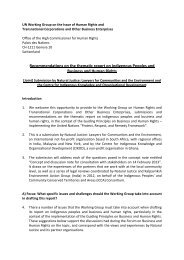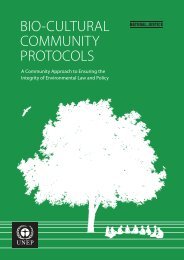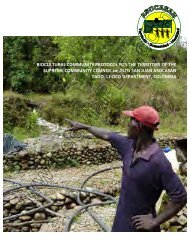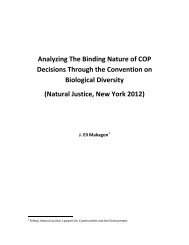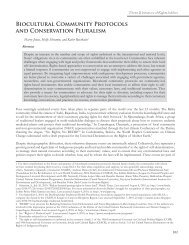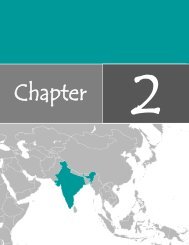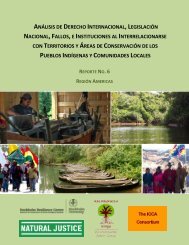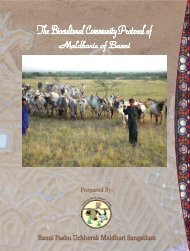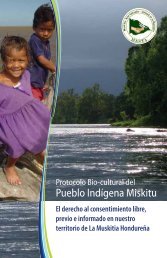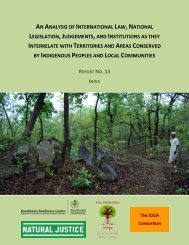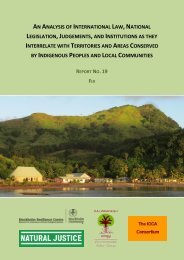English - Natural Justice
English - Natural Justice
English - Natural Justice
You also want an ePaper? Increase the reach of your titles
YUMPU automatically turns print PDFs into web optimized ePapers that Google loves.
The adoption in September 2007 of the UN Declaration on the Rights of Indigenous Peoples(UNDRIP) represents a strong breakthrough in setting international standards for Indigenouspeoples’ rights. Since then, the UNDRIP has been taken into consideration by a number ofnational and regional courts’ judgments. Similarly, the growing number of ratifications ofILO Convention 169, in particular in Latin America, has positively impacted the applicationand benchmark value of this instrument in national and regional case law. Other humanrights treaties such as the Convention on the Elimination of all Kinds of DiscriminationAgainst Women have important implications for ICCAs as well.Additionally, there is a growing body of case law – through the Inter-American Court ofHuman Rights (IACHR), the African Court on Human and Peoples Rights, and national courts– that is supportive of a range of Indigenous peoples’ and local communities’ rights based ontheir connection to their territories and unique social, cultural and ecological systems. In therecent case of Sarayaku v. Ecuador (2012), for example, the IACHR ruled that Ecuador had,among other things, breached Sarayaku villagers’ rights to prior consultation, communalproperty and cultural identity by approving a project without their involvement (see theInternational Law and Jurisprudence Report). At the national level, courts in Australia,Botswana, Belize, Canada, and South Africa, among others, have been instrumental in themove towards recognition of Indigenous peoples’ territorial rights.Emerging JurisprudenceMayagna Awas Tingni v. Nicaragua (2001): The IACHR recognized the validity of possessionover land based in Indigenous custom as a foundation for property over these lands, evenwhen a title is lacking. It also underscored the need to recognize and understand the broadrelationship between Indigenous peoples and their lands, which forms a fundamental basisfor their cultures, spiritual life, integrity, and economic survival.Saramaka v. Suriname (2006): Based on the communities’ relationships with their lands andnatural resources, the IACHR ordered Suriname to, among other things: delimit, demarcate,and grant collective title over the territory of the members of the Saramaka people inaccordance with their customary laws; abstain from acts until delimitation, demarcation,and titling has been completed, unless the State obtains the free, informed and priorconsent of the Saramaka people; review existing concessions; grant legal recognition of thecollective juridical capacity of the Saramaka people in accordance with their communalsystem, customary laws, and traditions; and adopt legislative, administrative, and othermeasures as may be required to recognize, protect, guarantee, and give legal effect to theright of the members of the Saramaka people to hold collective title of the territory theyhave traditionally used and occupied.These two judgements, among others, have helped establish the jurisprudence on the rightsof Indigenous peoples and are of utmost importance not just for Indigenous and tribalpeoples of Suriname and of other countries that have accepted the jurisdiction of the Inter-American Court, but also for other Indigenous peoples around the world.



